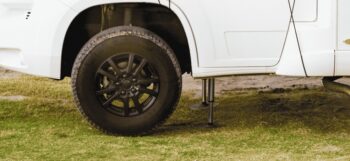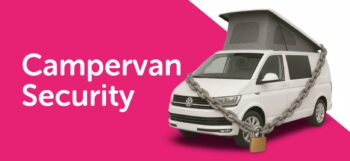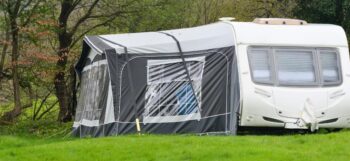Motorhome awnings are essential accessories for any camping enthusiast looking to enhance their outdoor experience. They provide a simple solution for extra living space, storage, and protection from the elements. With the right awning, you can enjoy outdoor dining, relax in the shade, or store your gear without cluttering your motorhome.
Types of motorhome awnings
When selecting an awning, it's important to choose one that suits your needs and motorhome. Here are the most popular types:
- Wind-out awnings: The most common type. Easy to extend and retract, providing quick and hassle-free shelter.
- Inflatable awnings: Use air tubes instead of poles, making them lightweight and easy to set up. Perfect for beginners.
- Traditional pole awnings: Require more effort to set up but offer stability and durability in all weather conditions.
Benefits of having a motorhome awning
One of the biggest advantages is the extra living space they provide. Whether you use it as a lounge area, a sheltered dining space, or even an additional sleeping area, an awning creates a more versatile setup for your travels. They also offer essential weather protection, allowing you to enjoy the fresh air while staying shielded from rain or harsh sun. Additionally, awnings help keep your motorhome’s interior organised by providing extra storage for wet clothes, bicycles, and bulky gear, preventing clutter inside. More than just a functional extension, an awning transforms your outdoor experience, creating a comfortable space for meals, socialising, or simply unwinding—whatever the weather.

Choosing the right awning for your motorhome
Selecting the perfect awning depends on your motorhome’s size and your travel style.
Consider the following:
- Size and compatibility: Ensure the awning fits your motorhome’s height and length to provide secure coverage and stability. Check manufacturer specifications to avoid installation issues.
- Material: Durable, waterproof fabrics like polyester or acrylic. Look for UV-resistant options to prevent fading.
- Ease of setup: Choose an awning that suits your setup preferences. Traditional manual pole awnings are often more affordable, while wind-out or electric models provide quick and effortless functionality.
- Seasonal use: Consider an all-season awning with reinforced panels for year-round travel or a lightweight canopy for shade and ventilation during summer trips.
Setting up and maintaining a motorhome awning
Setting up and maintaining a motorhome awning can vary depending on the type of awning you have. Here’s a guide for each main type:
Wind-out awnings
Wind-out awnings are incredibly convenient and simple to use, making them ideal for those who want quick access to extra space. To set up, ensure your motorhome is parked on level ground. Extend the awning slowly, making sure the fabric is taut but not overstretched. Once extended, secure it with pegs and guy ropes to prevent movement in the wind. While these awnings are sturdy, they’re not designed to withstand heavy storms, so always retract the awning if high winds or bad weather are forecast. Regularly check for signs of wear around the arms and the fabric, especially at the seams, and clean the surface after each trip to prevent dirt buildup. During the off-season, store it in a dry place to prevent mould or mildew.
Inflatable awnings
Inflatable awnings are designed to be quicker and easier to set up. They typically feature a flexible air beam system that inflates and provides structure to the awning. These awnings are attached to the motorhome using a C- rail or a connection sleeve that is designed to fit over the vehicle's side.
To set up, inflate the poles using a pump, ensuring that each pole is fully inflated for optimal structure and stability. Just like wind-out awnings, these should be anchored securely with pegs and storm straps. Inflatable awnings may not hold up well in storms or gusty winds, so be sure to take them down in rough weather. Maintenance involves checking the air pressure of the poles regularly to avoid under-inflation, which can affect the awning’s durability. Cleaning the fabric after each use will prevent any build-up of dirt or moisture. For storage, ensure the awning is fully dry and store it in a cool, dry place to avoid mildew.
Pole awnings
Pole awnings are the traditional, manual type of awning, and they provide excellent stability when properly set up. Pole awnings are typically connected to the motorhome using a drive-away kit or fixing straps that attach to the vehicle’s side. The connection is made by threading a dedicated awning channel on the motorhome (usually a rail or a dedicated fixing point on the side of the vehicle) through the awning’s beading or a C-channel strip. Once threaded, the awning is secured tightly with straps or additional poles that help hold the structure in place. Some pole awnings also have roof bars or tension poles that connect to the roof of the motorhome for added stability. Once all the poles are set up and the fabric is taut, the awning is anchored to the ground for further security. Since these awnings rely on poles, they tend to be more resistant to strong winds compared to other types. However, they are still not storm-proof, so always take them down if bad weather is predicted. Regularly inspect the poles for any signs of wear, cracks, or rust and clean the fabric after each trip. Store the awning in a dry place when not in use to prevent the fabric from becoming damaged by damp conditions.
Seasonal and full-extension awnings
These awnings are designed to provide extra living space and protection year-round. They are typically larger and more robust than other types and may have extra features like walls or doors to enclose the space. When setting up, ensure the base is stable and the support poles are firmly in place. These awnings are more resistant to the elements than smaller awnings, but they still need to be taken down during extreme weather, as strong winds or heavy storms could cause damage. For maintenance, check the frame for rust or wear, and inspect the fabric for tears or weak spots. Clean and dry the fabric thoroughly after each trip and store it in a well-ventilated area to avoid mould.
General maintenance tips
Regardless of the type of awning, always ensure that you’re setting it up on level ground and securing it with the appropriate pegs and straps. Never leave your awning extended in windy or stormy conditions, as even the sturdiest awning can be damaged. Regularly inspect the fabric for damage and clean it after each trip to keep it in the best possible condition. Store the awning properly during the off-season, ensuring it’s completely dry to prevent mould and mildew buildup. By following these setup and maintenance tips for each type of awning, you can enjoy extended outdoor living with your motorhome for years to come.
Motorhome awning accessories
You can enhance your awning setup, and give it a cosier feel with the addition of accessories such as:
- Side panels: For added privacy and wind protection on a wind-out awning.
- Breathable awning carpets and ground sheets: To keep the area clean and comfortable.
- Lighting and heating: Add outdoor lights or heaters for added convenience. Be sure to check campsite rules on awning heaters and never leave them unattended.
Windbreaks and curtains: Block the wind and provide extra privacy.

Awning regulations and considerations
When planning to set up an awning at a campsite, it’s essential to check the campsite's policy beforehand, especially if you're using a larger or more elaborate model. Some campsites may require prior approval for awning setups due to space limitations, local regulations, or safety concerns. Some campsites charge an additional fee to add an awning to your booking. Always ensure the pitch you book will not only accommodate your motorhome dimensions, but a fully erect awning. Failure to adhere to campsite rules can lead to fines or the need to dismantle your setup, causing unnecessary disruption to your trip.
Be respectful of noise levels, especially in the evening, to ensure that everyone around you can enjoy a peaceful environment. Properly maintain the cleanliness of the area under your awning, as clutter can spill over and affect shared areas. By respecting both campsite rules and your fellow campers, you help foster a positive camping experience for everyone.
Popular motorhome awning brands and options
Several reputable brands offer high-quality motorhome awnings, including:
These brands provide durable, easy-to-use options that are compatible with various motorhome types.
Insurance to protect your adventures
We’ve been arranging insurance for motorhomes in the UK for over 40 years, so we know how to help find a policy to suit you.
Our motorhome insurance* can help to make sure your pride and joy is properly protected. But remember, no policy protects you against every scenario.
Our award-winning agents are always happy to help. Call them on 01480 402 460 for a new quote or to help with any changes to an existing policy.
*Terms and conditions, limitations, exclusions and acceptance criteria apply. Policy enhancements are subject to an additional premium.
FAQs
Do I need a motorhome awning?
If you want to expand your living space, have extra storage, or need protection from the elements, a motorhome awning is a great investment.
How do I choose the right awning for my motorhome?
Consider the size of your motorhome, the type of trips you take, and how easy the awning is to set up. Check if it's compatible with your motorhome's height and width.
Can I use a motorhome awning in winter?
Yes, some motorhome awnings are designed for all-season use. Choose a robust, weather-resistant awning with good insulation for winter trips.
Disclaimer: The sole purpose of this article is to provide guidance on the issues covered. This article is not intended to give legal advice, and, accordingly, it should not be relied upon. It should not be regarded as a comprehensive statement of the law and/or market practice in this area. We make no claims as to the completeness or accuracy of the information contained herein or in the links which were live at the date of publication. You should not act upon (or should refrain from acting upon) information in this publication without first seeking specific legal and/or specialist advice. Arthur J. Gallagher Insurance Brokers Limited trading as Lifesure accepts no liability for any inaccuracy, omission or mistake in this publication, nor will we be responsible for any loss which may be suffered as a result of any person relying on the information contained herein.
FP200-2025











